Namangan Engineering-Technological Institute (NETI) is an important higher education institution in Namangan, Uzbekistan, focusing on education and research in the field of engineering technology. The school has trained a large number of outstanding engineering and technical professionals for Uzbekistan and neighboring countries, and enjoys a high reputation in related fields. The following is a detailed introduction to Namangan Engineering-Technological Institute:
Overview
Established: 1968
Location: Namangan, Uzbekistan
Name: Namangan Engineering-Technological Institute (NETI)
History
Development stage: After several name changes and developments, the scope of education and research has been gradually expanded, and the teaching quality and scientific research level have been improved.
Modern stage: In recent years, the school has continuously carried out reforms and modernization, and strengthened cooperation with international universities and research institutions.
Main functions
Education: Provide undergraduate, graduate and doctoral education, and cultivate professionals with solid engineering and technical knowledge and practical ability.
Research: Conduct basic and applied research covering mechanical engineering, electrical engineering, electronic engineering, computer science, civil engineering, chemical engineering and other fields.
Training: Provide continuing education and training for technical personnel and managers of government and enterprises to improve their professional skills.
Social services: Participate in local and national scientific research projects, provide engineering and technical consultation and services.
Educational programs
The main educational programs provided by Namangan Institute of Engineering and Technology include:
Undergraduate education:
Mechanical Engineering
Electrical Engineering
Electronic Engineering
Computer Science and Technology
Civil Engineering
Chemical Engineering
Automation and Control Engineering
Material Science and Engineering
Environmental Engineering
Mining Engineering
Graduate education:
Mechanical Engineering
Electrical Engineering
Electronic Engineering
Computer Science and Technology
Civil Engineering
Chemical Engineering
Automation and Control Engineering
Material Science and Engineering
Environmental Engineering
Mining Engineering
Doctoral education:
Mechanical Engineering
Electrical Engineering
Electronic Engineering
Computer Science and Technology
Civil Engineering
Chemical Engineering
Automation and Control Engineering
Material Science and Engineering
Environmental Engineering
Mining Engineering
Research directions
The main research directions of Namangan Institute of Engineering and Technology include:
Mechanical Engineering: Research on mechanical design, manufacturing process, mechanical automation, etc.
Electrical Engineering: Research on power systems, motors and electrical appliances, power electronics technology, etc.
Electronic Engineering: Research on circuit design, signal processing, communication technology, etc.
Computer Science and Technology: Research on computer systems, software development, artificial intelligence, etc.
Civil Engineering: Research on construction engineering, road and bridge engineering, geotechnical engineering, etc.
Chemical Engineering: Research on chemical processes, materials science, environmental chemistry, etc.
Automation and Control Engineering: Research on control systems, automation technology, intelligent systems, etc.
Materials Science and Engineering: Research on metal materials, polymer materials, composite materials, etc.
Environmental Engineering: Research on environmental pollution control, environmental monitoring, waste treatment, etc.
Mining Engineering: Research on mineral resource development, mine safety, ore processing, etc.
Scientific Research Achievements
Namangan Institute of Engineering and Technology has achieved remarkable research results in many fields, especially in the fields of mechanical engineering, electrical engineering, electronic engineering, computer science and technology, civil engineering, chemical engineering, automation and control engineering, materials science and engineering, environmental engineering, mining engineering, etc.
Participated in many national and international cooperation projects, and made important contributions to the development of engineering technology and environmental protection in Uzbekistan.
Cooperation and Exchange
Domestic Cooperation: We have established extensive cooperative relations with government departments, enterprises, scientific research institutions and universities in Uzbekistan.
International Cooperation: We have established cooperative relations with international universities and research institutions and participated in international scientific research projects and academic exchanges. For example, we have close cooperation with Moscow State University of Technology in Russia, Tsinghua University in China, Technical University of Munich in Germany, etc.
Facilities and Resources
Teaching Facilities: The school has modern teaching buildings, laboratories, libraries and student dormitories, providing students with a good learning and living environment.
Laboratories: There are multiple laboratories for mechanical engineering, electrical engineering, electronic engineering, computer science and technology, civil engineering, chemical engineering, automation and control engineering, materials science and engineering, environmental engineering, mining engineering, etc., which are used for scientific research and teaching practice.
Library: We have a professional library with a large collection of books, journals and research reports in the field of engineering technology.
Practice Base: We have established internship bases with many enterprises and government agencies to provide students with practical opportunities.
Talent cultivation
Undergraduate education: Cultivate professionals with solid engineering and technical knowledge and practical ability, who can work competently in the fields of mechanical engineering, electrical engineering, electronic engineering, computer science and technology, civil engineering, chemical engineering, automation and control engineering, materials science and engineering, environmental engineering, mining engineering, etc.
Postgraduate education: Cultivate senior talents with high scientific research ability and professional quality.
Doctoral education: Cultivate top talents with independent scientific research ability and innovation ability.
Short-term training: Regularly hold short-term training courses and seminars to provide continuing education and training for technical personnel and managers of government and enterprises.
Social impact
The research results and professional services of Namangan Institute of Engineering and Technology have had a positive impact on the development of engineering technology and environmental protection in Uzbekistan, and promoted the modernization of related fields.
The school's graduates have played an important role in the fields of mechanical engineering, electrical engineering, electronic engineering, computer science and technology, civil engineering, chemical engineering, automation and control engineering, materials science and engineering, environmental engineering, mining engineering, etc., and have contributed to the economic and social development of Uzbekistan.
Ranking and Recognition
International Ranking: According to the 2024 THE World University Rankings, Namangan Institute of Engineering and Technology ranks high in the field of engineering and technology.
Domestic Recognition: Namangan Institute of Engineering and Technology is an important institution of higher learning in Uzbekistan, with a high degree of recognition, and is one of the first choices for local students and parents.
Summary
Namangan Institute of Engineering and Technology is an institution of higher learning with an important position in mechanical engineering, electrical engineering, electronic engineering, computer science and technology, civil engineering, chemical engineering, automation and control engineering, materials science and engineering, environmental engineering, mining engineering and other fields. It has not only trained a large number of professional talents for Uzbekistan, but also contributed to international education and scientific research cooperation. For students who are interested in these fields, this is a learning and research platform worth considering.
-
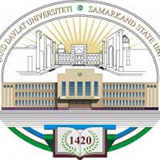
Samarkand State University
-

Tashkent State University of Economics
-
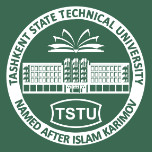
Tashkent State Technical University
-

Moscow State University in Tashkent named M.V Lomonosov
-
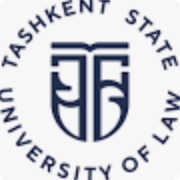
Tashkent State University of Law
-
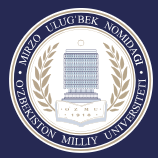
National University of Uzbekistan
-

Karakalpak State University
-
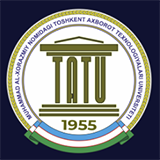
Tashkent University of Information Technology
-

Tashkent State Agrarian University
-

Bukhara State Medical Institute
-

Mesoamerican University
-

Istmo University
-

Mariano Galvez University of Guatemala
-

Regional University of Guatemala
-

Galileo University
-

Francisco Marroquín University
-

Rafael Landívar University
-

University of the Valley of Guatemala
-

University of San Carlos of Guatemala
-

Technological Institute of Tlaxcala Plateau
-

Golfo University
-

Technological University of South Sonora
-

Technological University of Huejotzingo
-

Tizimín Institute of Technology
-

Chilpancingo Institute of Technology

